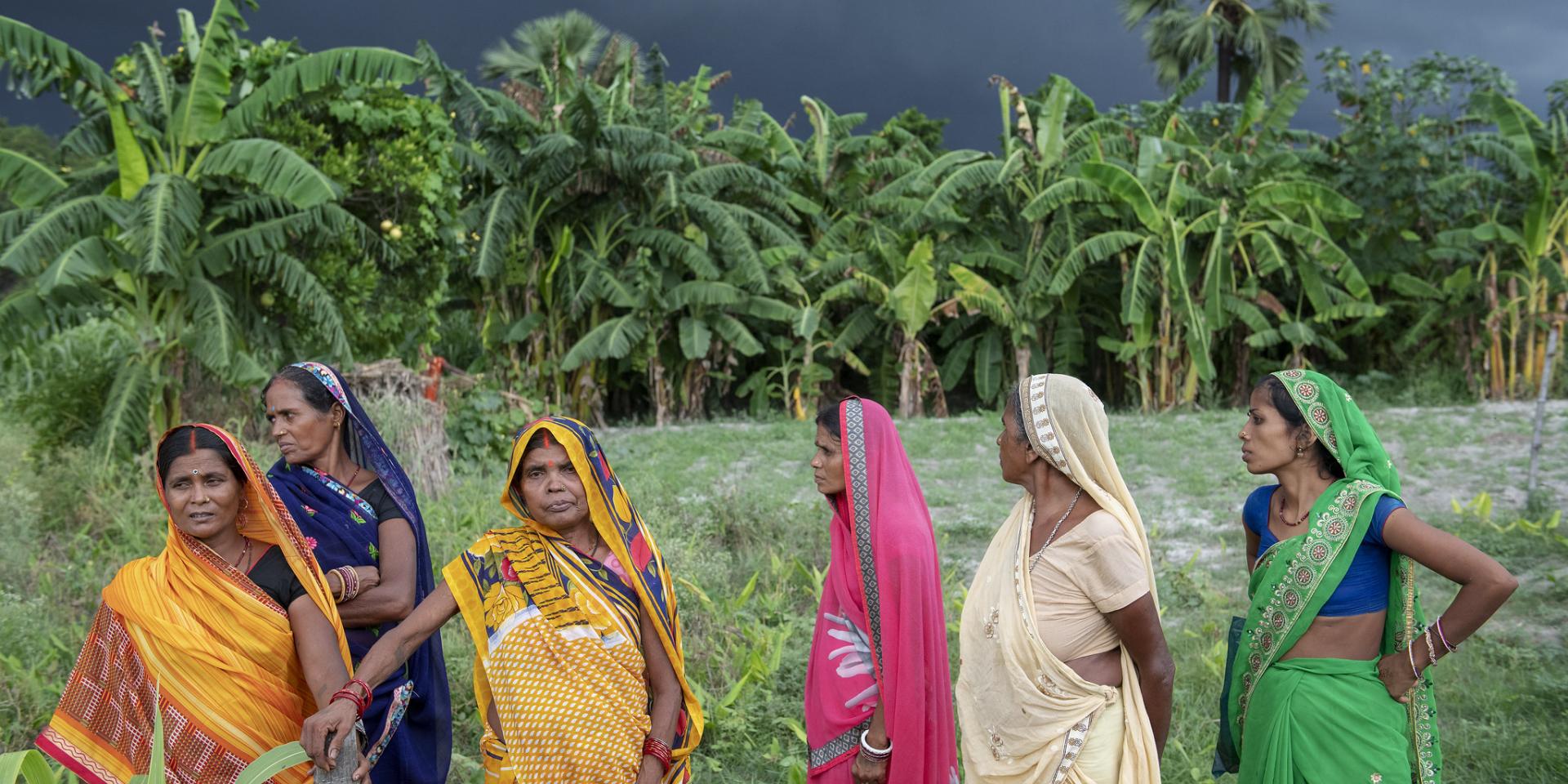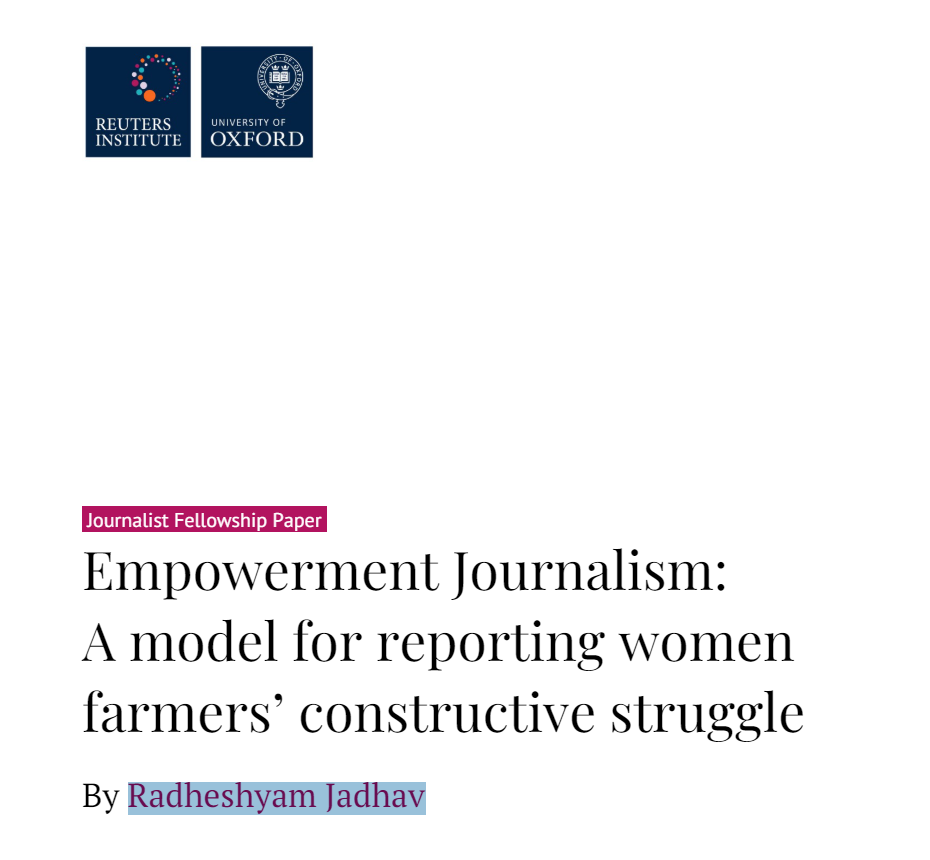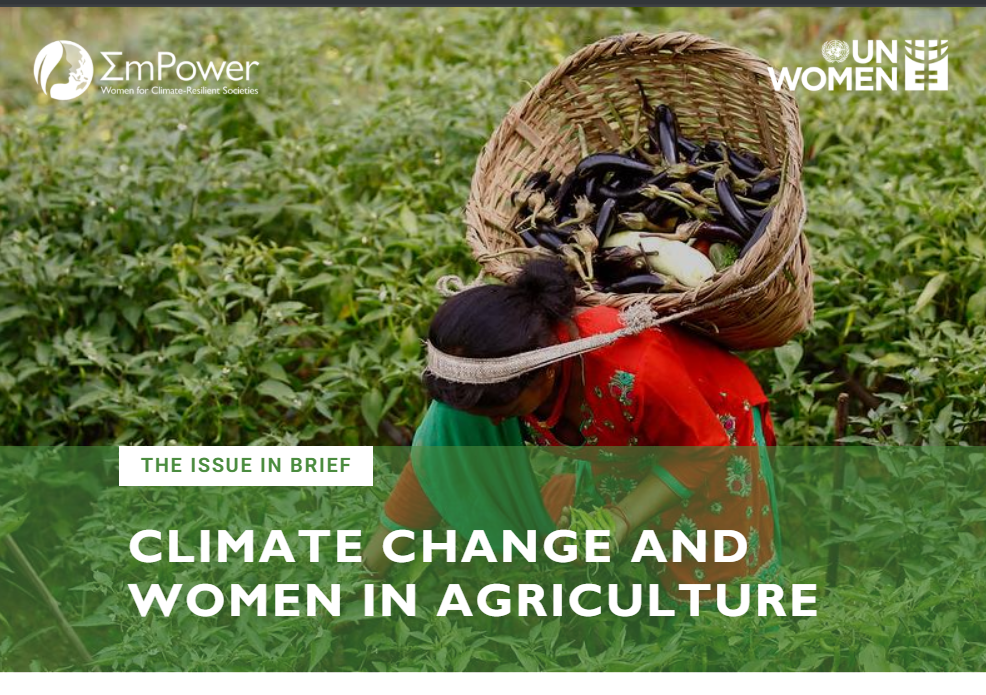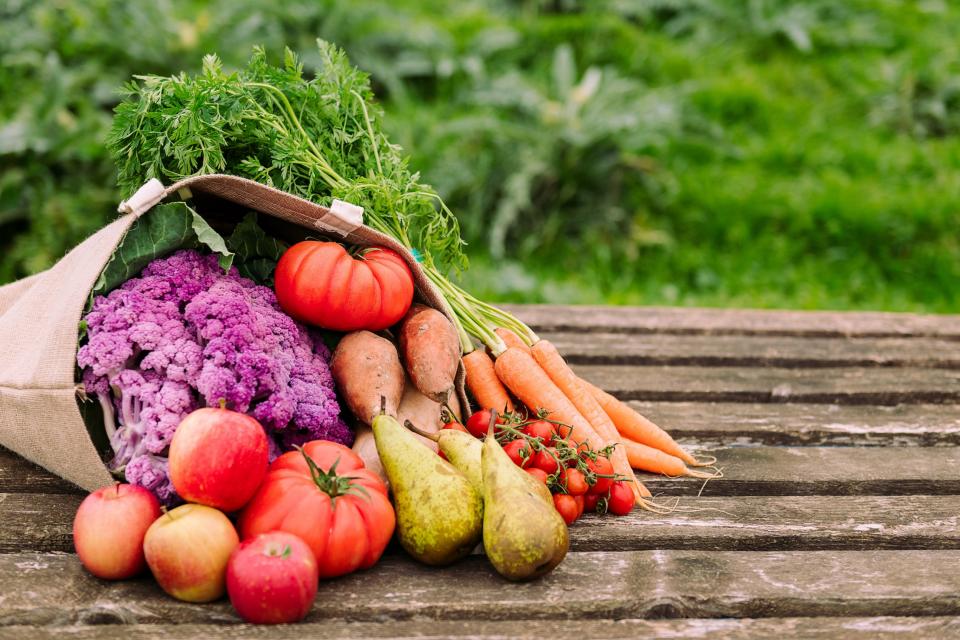Cultivating grit and harvesting resilience
 Photo: C. de Bode/CGIAR
Photo: C. de Bode/CGIAR
CGIAR gender researchers have studied a project that gave more than 25,000 Indian women access to the ‘one-acre model’, designed to give women the right to grow crops using efficient agricultural technologies. They find that bundling both technical and social solutions is critical to enable women to overcome barriers to productive, profitable and resilient livelihoods.
Marked by deficient rains and with just 19.36% of water storage left in dammed reservoirs (as of April 1, 2024), the Indian region of Marathwada finds itself once again teetering on the brink of another drought. The water crisis has reached a critical point, with several areas in this region receiving drinking water supply only once a week. The situation is particularly dire in rural areas.
As the water shortage intensifies, the impact on agriculture is very high. With no water available, the rabi season crops are drying up in the fields. Crop failures due to drought or unseasonal rains lead to distress among farming households. This often culminates in male heads of household dying by suicide, while many of those who survive choose to migrate elsewhere.
“There would be another wave of migration out of many villages,” predicted Suvarna Chalak, a farmer from Bhatshirpura village in Dharashiv (formerly Osmanabad), who added that she is not very worried about what will happen to her and her family. “We will sustain. No worries. We are prepared to face the situation,” she said confidently. Suvarna attributed this preparedness to the Women-led Climate Resilient Farming (WCRF) project, popularly known as the ‘one-acre model’, which has helped her and many others to build resilience.
The WCRF project, developed by Indian non-profit organization Swayam Shikshan Prayog (SSP) together with women farmers, advocates for women to have cultivation rights and rights to employ water-efficient, chemical-free practices for diversified cropping systems—even if they only have access to small plots of land, whether it is one acre or less. This holistic approach includes soil and water management, vermicomposting, natural pest control, livestock management and market access. Women are trained in bio-fertilizer and pesticide production, and involved in cultivation decisions.
Structural barriers curtail gender equality
Married when she was still in school, Suvarna had to abandon her education and take on daily wage work alongside her husband, as their two-acre family land failed to provide sufficient sustenance. Suvarna’s story is not unique in this region plagued by recurrent droughts.
Our recent case study of SSP’s WCRF project, for the CGIAR Gender Equality Initiative’s Work Package 2 (EMPOWER) led by International Rice Research Institute (IRRI) and funded by the CGIAR GENDER Impact Platform, put the spotlight on the oppressive structures that place women farmers at the lowest rung of the social hierarchy.
Sowing the change
We found that initiatives implemented by SSP encountered obstacles initially. For example, women found it challenging to travel to Dharashiv city to attend training on organic farming. To address these challenges, SSP established a network of women within the community to provide support. This intertwining of social and technical components was critical to ensure women’s access to technology and knowledge. Community building became crucial in convincing families, particularly men, of the benefits of women’s engagement.
Enabling small and marginal women farmers to move away from physically demanding daily wage labor to a diversified farming system was a critical intervention. Another social intervention embedded in the WCRF project was the cultivation of self-assertiveness in women farmers. A majority of our interviewees acknowledged that they had to seek permission from husbands and in-laws even for trivial matters such as stepping out of the house to buy vegetables or decisions about what should be cooked for meals. Women farmers who had been selected to be village leaders encouraged other women to join the SSP network. The training and support network provided by SSP played a pivotal role in dispelling anxiety, instilling confidence and fostering a sense of empowerment amongst these women.
This, however, was not a one-time effort but an ongoing process of communication. Without this continuous engagement, women found it challenging to implement what they learned in workshops and training sessions and to gain family support.
While technology alleviated the drudgery in agriculture, and training equipped women with skills, another vital social intervention played an important role in establishing women’s rights as cultivators. Most of the women faced limitations in obtaining access to farmland to implement the one-acre model. Men decided what should be cultivated and didn’t engage women in decision-making. They allowed women to sow in the space unused by men. Undeterred, women turned to backyards and borders of farmland, and those without land collaborated to lease fallow plots for cultivation.
Water-efficient technologies, such as drip irrigation and sprinklers, were elusive for women. SSP organized training programs, with the help of government officials, and introduced women to the new technology promoted by the government. They were also introduced to all the relevant government-sponsored schemes. Women who never before visited government offices and training centers are now actively engaging with government programs.
Reaping resilience and empowerment
Organic food cultivation and agri-allied businesses enabled women farmers to generate diverse income streams. This proved to be invaluable, particularly during crop failures caused by droughts or unseasonal rains. The one-acre model, which aims to bolster agro-ecological resilience, also increased the economic resilience of these women, leading to higher adaptive capacities.
Suvarna not only improved her crop yields, but also started saving and investing. She grows a variety of crops and has diversified her income through goat and buffalo rearing, a grocery shop and a stationery business. She actively participates in SSP’s community, leveraging her newfound confidence to mentor other women.
Since 2015, SSP has trained approximately 42,700 farmers as part of the WCRF project, and of these 25,803 have adopted the one-acre model on 12,902 acres, and have reported yield increases ranging from 10 to 15%. They have also enjoyed a 20 to 30% reduction in expenditure on agriculture inputs and savings in food expenditure ranging from 35 to 45%. Furthermore, 83% of adopters have initiated at least one additional farm-based business, while 13% of adopters have acquired land titles and 25% have become agri-entrepreneurs—that is, innovative individuals pursuing a new business idea.
No silver bullets, but context-specific, multi-pronged solutions
Resilience and empowerment processes are crucial as women farmers grapple with the unfolding challenge of climate change, coinciding with the need to increase annual food production by 60% over the next three decades to support the growing global population. A tailored response—bundling multiple interventions to effectively address the intersecting barriers—is essential.
These bundles integrating both social and technological components result in a holistic and synergistic approach, ensuring that interventions are effectively addressing the multifaceted challenges faced by women farmers, including constraining social and gender norms. This approach stands as a cornerstone for fostering empowerment and resilience among women in agriculture, leading to gender-transformative change and sustainable impact.
Further reading

Empowerment Journalism: A model for reporting women farmers’ constructive struggle
Jadhav, R. (2023). Empowerment journalism: A model for reporting women farmers and climate change. Reuters Institute for the Study of Journalism, University of Oxford. https://reutersinstitute.politics.ox.ac.uk/sites/default/files/2023-07/RISJ%20Project_Radheshyam_FINAL.pdf

Climate Change and Women in Agriculture
UN Women (n.d.). Climate change and women in agriculture. United Nations. https://www.uncclearn.org/wp-content/uploads/library/02-issue-brief_climate-change-and-women-in-agriculture.pdf
